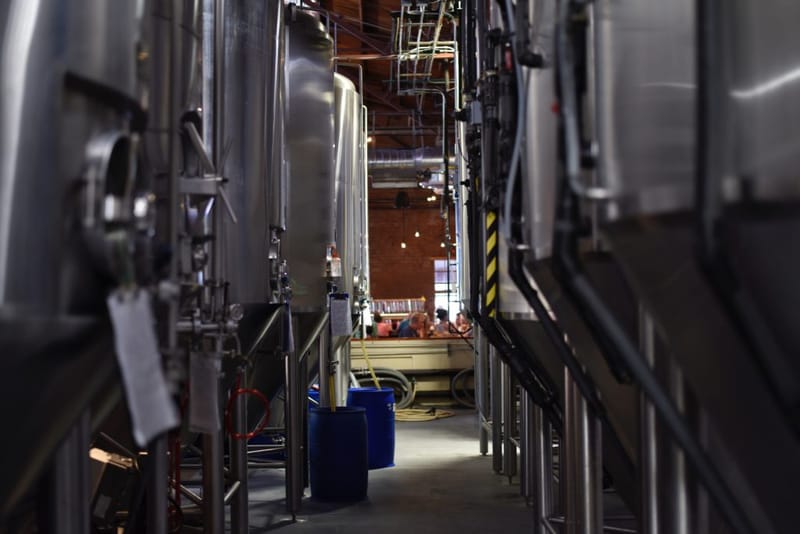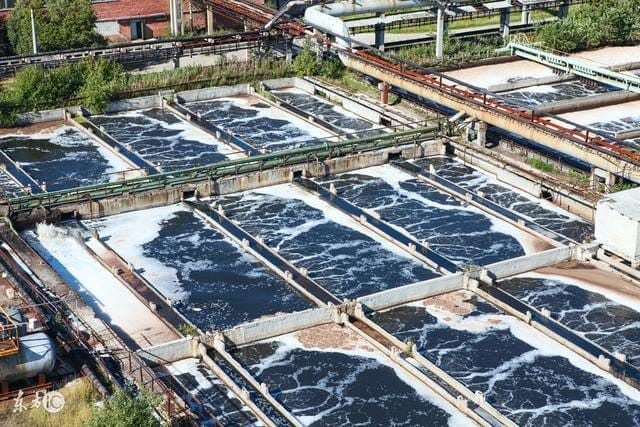Brewery Wastewater Treatment: An In-Depth Analysis and Solutions
Contents
Introduction to Brewery Wastewater Treatment
The brewing industry, steeped in tradition, is a significant consumer of water, using it extensively in various stages of beer production including mashing, lautering, fermentation, and packaging. This process generates wastewater that, due to its composition rich in organic matter and nutrients, necessitates rigorous treatment before it can be responsibly discharged. The imperative for such treatment stems from the potential environmental repercussions of discharging untreated or inadequately treated wastewater, which can include the pollution of water bodies and the contamination of groundwater sources. This analysis delves into the characteristics of brewery wastewater, outlines the treatment methods available, discusses the challenges inherent in wastewater treatment, and proposes solutions to mitigate these challenges.

Analyzing the Unique Properties of Brewery Wastewater:
The unique properties of brewery wastewater illuminate the intricacies involved in its effective management treatment and the critical need for effective management to mitigate environmental risks. The composition of this wastewater is characterized by several distinct elements:
Residues of Sugar and Alcohol: A fundamental aspect of beer making, the fermentation process, introduces sugar and alcohol residues into the wastewater. These substances considerably amplify the wastewater's organic content, making it a potent source of nutrients for microorganisms if it enters natural waterways untreated. The accumulation of these residues directly stems from the fermentation of sugars into alcohol and carbon dioxide—a central reaction in the brewing process.
Presence of Total Suspended Solids (TSS): A notable amount of solid materials, such as barley husks and yeast cells, remain in suspension within brewery wastewater. These solids, originating from various stages of beer production, are characterized by their insolubility, necessitating their extraction prior to the wastewater's discharge. The prevalence of TSS complicates the wastewater's treatment and poses significant environmental hazards. The solids can blanket aquatic habitats and block sunlight, disrupting ecosystems and harming aquatic life.
Biological Oxygen Demand (BOD):This indicator measures the required oxygen amount for microorganisms to decompose the organic matter in the wastewater within a specific timeframe, usually five days. Elevated BOD levels signal a high concentration of organic pollutants, indicating the need for substantial microbial intervention for degradation. This aspect is particularly concerning as it suggests the potential reduction of dissolved oxygen in natural waters, potentially leading to anoxic conditions detrimental to aquatic life and ecosystem stability, culminating in biologically dead zones.
Chemical Oxygen Demand (COD): Offering a broader view of the wastewater's impact, COD assesses the total amount of organic materials in the water that can undergo oxidation. This measure encompasses both biodegradable and non-biodegradable elements, presenting an all-encompassing snapshot of the wastewater's capacity to diminish oxygen levels in aquatic environments. Elevated COD levels denote a high concentration of organic substances, posing similar risks to BOD in terms of oxygen depletion and ecological damage if not adequately treated.
Acidic pH Levels: Another significant attribute of brewery wastewater is its acidic pH, resulting from the brewing process, including wort boiling, and the utilization of cleaning agents and additives. The acidic condition of the wastewater challenges the treatment protocols and necessitates adjustment to prevent harm to treatment plant infrastructure and to adhere to environmental discharge norms. Moreover, releasing acidic wastewater into natural waters can cause acidification, adversely affecting aquatic organisms and possibly mobilizing harmful metals.
Grasping these properties is vital for the development of effective wastewater treatment methodologies that safeguard environmental health and meet regulatory compliance. The diverse aspects of brewery wastewater—organic content, suspended solids, and acidic pH—introduce specific challenges requiring customized solutions, underscoring the importance of integrated management strategies within the brewing sector to address these complex environmental considerations.

Treatment Methodologies:
Physical Treatment: This preliminary phase aims at extracting coarse solid materials (e.g., barley husks, yeast) through mechanisms such as sedimentation or Enhanced Dissolved Air Flotation (E-DAF), which employs air bubbles to segregate solids from the liquid efficiently.
Chemical Treatment: In this phase, the wastewater's pH is chemically adjusted to foster conducive conditions for subsequent biological treatment. It also involves coagulation, where suspended particles are destabilized to aggregate, and flocculation, where these particles form larger clusters (flocs) for easier removal via sedimentation or filtration.
Biological Treatment: This stage utilizes microorganisms, primarily bacteria, to digest and decompose the organic matter in the wastewater.
- Aerobic Treatment: Here, oxygen is supplied to bacteria through aeration, enabling the effective breakdown of organic matter, albeit with considerable energy requirements for maintaining optimal oxygen levels.
- Anaerobic Treatment: This process, which occurs in the absence of oxygen, is particularly suited to brewery wastewater treatment due to its proficiency in managing high organic loads, albeit necessitating meticulous management to avoid issues like foaming and odor.
Complexities in Brewery Wastewater Management:
The task of treating brewery wastewater introduces a set of intricate challenges that underscore the complexity of managing industrial waste in a manner that is both effective and environmentally responsible.
Variability in Organic Load: One of the paramount challenges in treating brewery wastewater is the inconsistency in the organic load, which is directly influenced by the fluctuating volumes of production and the diversity of beer types being brewed. These variations can dramatically alter the composition and potency of the wastewater, introducing significant hurdles in maintaining a consistent and efficient treatment process. The diversity in beer recipes and brewing schedules means that the wastewater's biochemical profile can shift rapidly, necessitating adaptive treatment strategies that can accommodate these dynamic changes without compromising on treatment efficacy.
High Oxygen Demand: Aerobic biological treatment processes, which are essential for breaking down organic pollutants, are notoriously energy-intensive. These systems require a constant supply of oxygen to support the metabolic processes of aerobic microorganisms tasked with digesting organic matter. The high oxygen demand translates into increased operational costs, primarily due to the energy needed to aerate the wastewater. This aspect of brewery wastewater treatment poses a dual challenge of environmental and economic sustainability, pushing for innovations that can optimize oxygen use or alternative methods thatare less reliant on high-energy inputs.
Treatment Complications: Further complicating the treatment landscape are issues like foaming, the generation of unpleasant odors, and the accumulation of excessive sludge. Each of these problems can disrupt the smooth operation of treatment facilities, requiring specialized knowledge and additional resources to manage. Foaming can interfere with aeration processes and tank capacities; odor complaints can affect community relations and worker satisfaction; and excessive sludge production demands additional disposal or treatment steps, adding to the operational burden.

Revolutionizing Wastewater Management with Sustainable Practices:
The quest to address the complexities of brewery wastewater treatment necessitates the adoption of pioneering solutions aimed at not only elevating the effectiveness of these processes but also their ecological viability.
Embracing Environmentally-Friendly Innovations: A notable advancement in this domain involves the deployment of environmentally-friendly products such as Cleanmaxx ANB. This product harbors bacteria engineered to excel in the anaerobic environments characteristic of brewery wastewater systems. The introduction of such microbial innovations can markedly bolster the reliability of anaerobic treatment methods, diminish the amount of sludge produced, and augment biogas generation. This byproduct, pivotal for energy creation, signifies a stride towards resolving the primary complications tied to anaerobic treatments, rendering brewery wastewater management more efficient and less demanding on resources.
Pioneering Water Reuse Strategies: Amid escalating concerns over water scarcity, repurposing treated brewery wastewater emerges as a vital conservation strategy. The application of this treated water for purposes like agricultural irrigation, industrial processes, or ancillary brewery operations can drastically curtail the reliance on fresh water sources. Nevertheless, unlocking the full potential of water reuse might require supplementary treatment phases to ascertain the water's suitability for its new role. Incorporating these water reuse methodologies not only aids in conserving precious water resources but could also lead to significant cost efficiencies and underscore a brewery's commitment to environmental responsibility.
In essence, the multifaceted challenges associated with brewery wastewater treatment demand an amalgam of technological ingenuity, strategic foresight, and ecological mindfulness for their resolution. By adopting green treatment solutions and venturing into water reuse opportunities, the brewing sector is poised to make substantial progress towards more sustainable and effective wastewater management approaches. These endeavors address the immediate hurdles of wastewater treatment and play a crucial role in wider environmental preservation efforts, highlighting the industry's dedication to sustainable practices and conscientious management of natural resources.